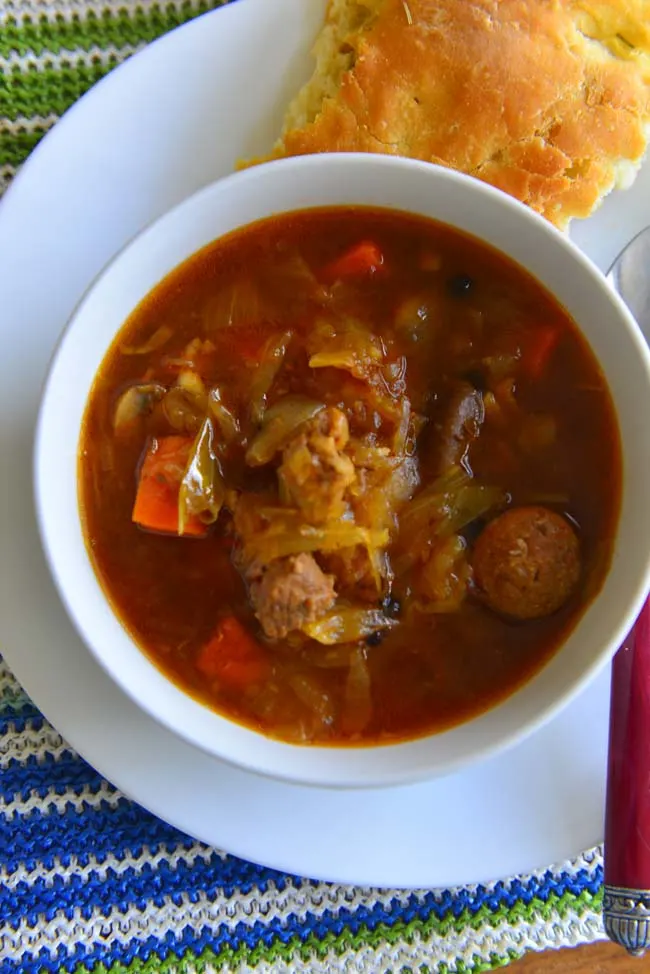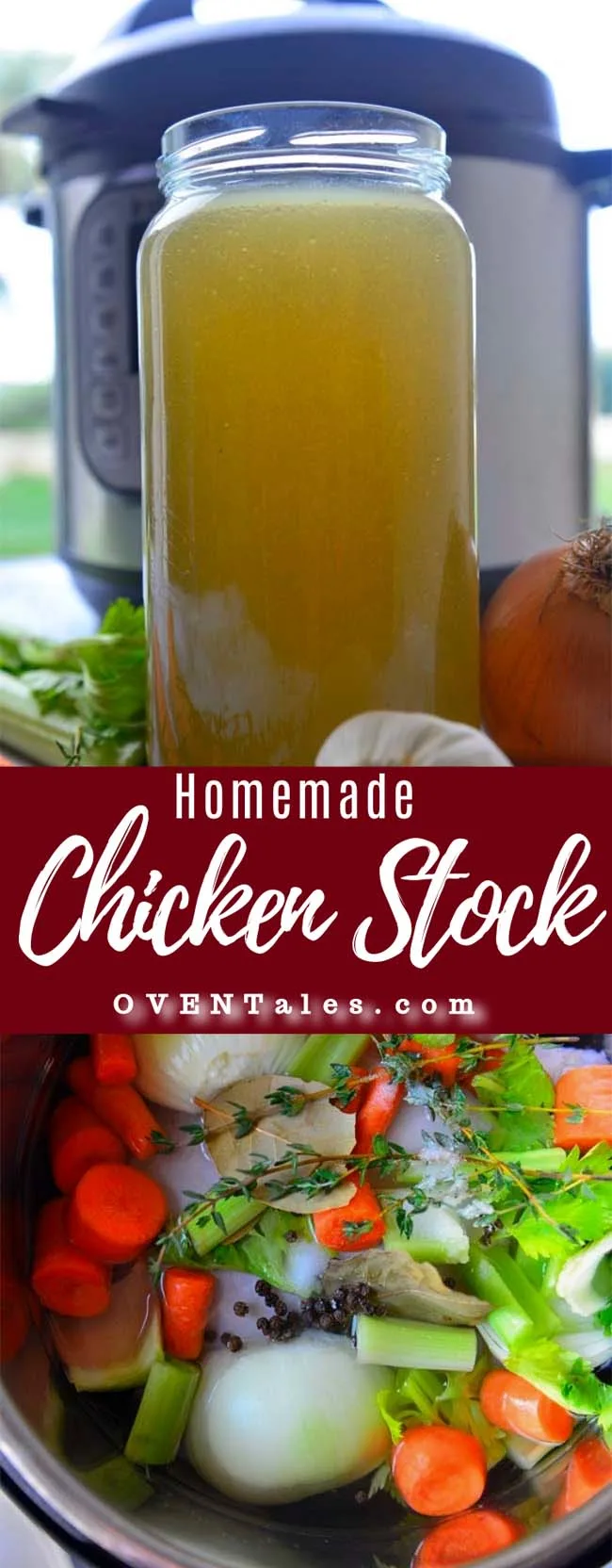Homemade chicken stock has much more flavor (and cheaper) than the packaged versions. It is the perfect base for soups, stews, gravies or sauces. Here are a few ways to work the stock making into your cooking schedule.
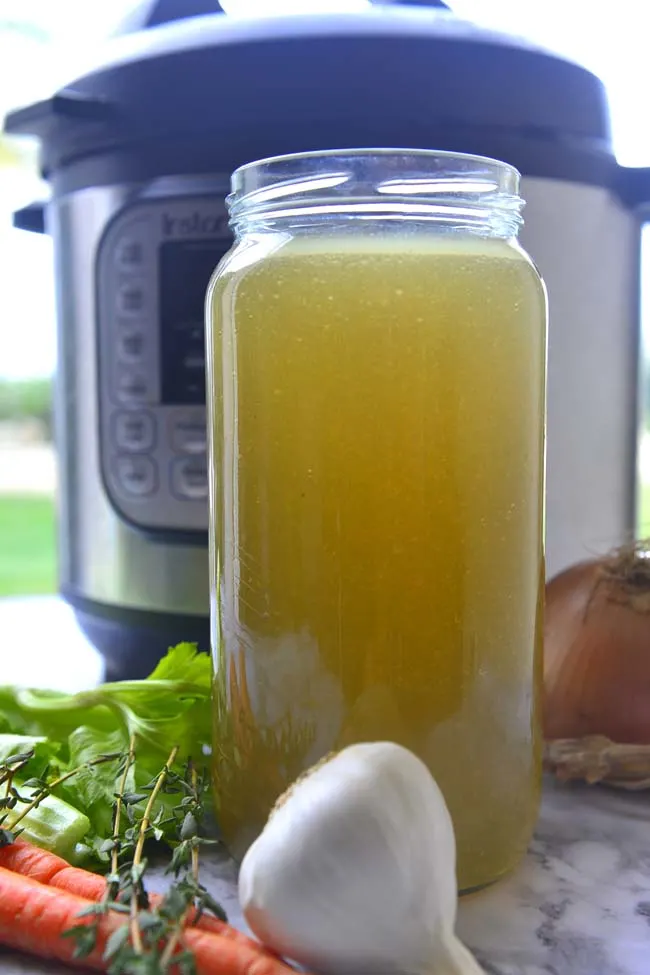
Making stock at home is very easy but seldom done in a modern kitchen. The slow simmering stock takes time and it is easier to pick up a pack(s) from the store. But with a little bit of planning stock making can be easily blended into your weekly cooking plans.
In case you are wondering, no you don’t have to do make stock every week, or even every month. Stocks are easy to freeze so make it large batches and freeze. One of the things that you will discover is that homemade stock has so much more flavor that you will need much less of it than the packaged versions.
So if you do reach for stocks time to time do try making it yourself sometime. Freshly made chicken noodle soup with homemade stock definitely has the power to banish the cold blues. Or just dilute the stock and simmer with fresh ginger and herbs and take a few sips …
Stock or broth?
Often times these two are used interchangeably, but there are a few technical differences that make each one best suited for certain dishes.
Stock is made with bones, with or without meat, vegetables (carrots, celery, onions or whatever combination your region favors), a few aromatic spices and water. All these are simmered for a couple hours on the stovetop. It is thicker but needs more flavorings to become appetizing.
Broth (surprise! ) is made similarly with meat/vegetables and maybe a few aromatic depending on your region. It is thinner and more flavorful because the long-simmering process has extracted the flavors of the vegetables and meat without the thickeners.
By this definition this homestyle stock will fall somewhere in the middle. Don’t be disheartened though – the latest miracle ingredient, bone broth is in fact stock.
The lesson of the day is not to fret over cooking school definitions. The expert’s opinions are for those are commercial kitchens, while the food that you and I cook is for us and our loved ones. So if you prefer stock over broth go for it, or use what you have on hand! There is no one definition of taste and style or what is the best food!
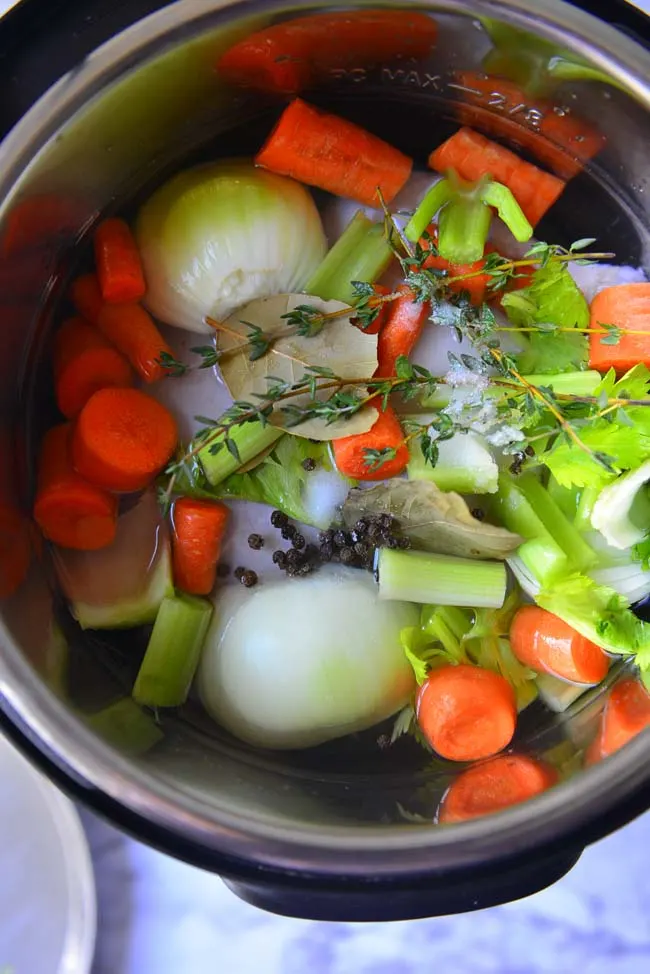
Fresh clean ingredients makes a refreshing stock. Leave the leaves and skin on (except for onions- more on that below). There are a lot os flavor hiding in these.
On to stock making ….
An Instant Pot or Pressure cooker reduces the cooking time greatly. Again all ingredients are added to the pot and bought to a rolling boil. Then pressure cook on high for at least 40 minutes and allow it to come back to normal pressure slowly (NPR). It takes about 5 minutes of hands-on time – cleaning the chicken, cutting vegetables and skimming the scum. 5 minutes to fabulous stock – isn’t that something!
There is another reason that I like to use a pressure cooker to make stock. The high pressure sealed environment extracts more minerals and gelatin into the stock than regular cooking. The resultant stock is much thicker and flavorful (possibly more nutritious as well).
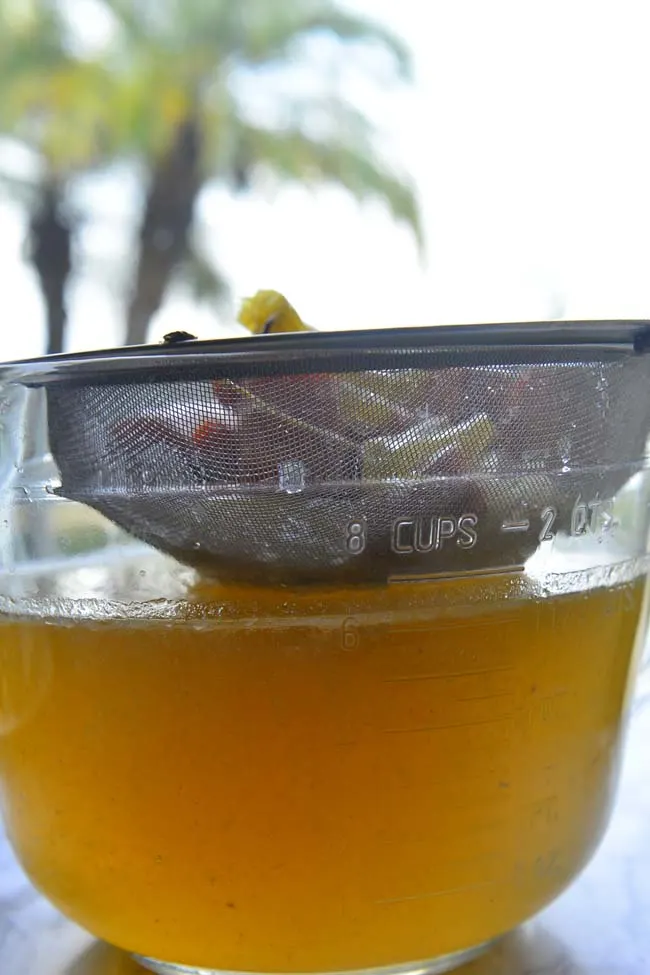
Here are a few different ways you can make chicken stock
- Whole chicken – my preferred method especially when I plan to make chicken noodle soup
- With leftover bones and meat after carving a whole fresh/ baked chicken
- Wing tips and necks and all the other scraps saved over time
- Any combination of the above
Remember – the more bones and skin go into the broth the more gelatinous the stock will be.
The recipe below is going to have a whole chicken but you could substitute any of the above.
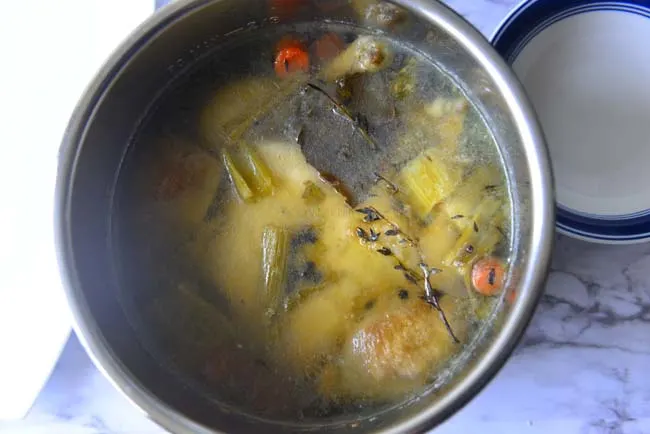
The above picture was taken after refrigerating the stock overnight. The excess fat has risen to the top and the stock has become gelatinouos. While that is a good sign in in terms of the amount of gelatin and utrients extracted, it is impossible to strain it without warming it. I would rather strain the stock first. You can refrigerate it and scoop out the excess fat once it has risen to the top and solidified.
Here are a few soups to make with this stock
A few notes when using instant pot /pressure cooker
- Leave the onion skins out. The skins add a bit more color and flavor to the stock, but to me, the danger of it becoming loose and sticking to the pressure vents are far too great to ignore.
- Start cooking in the sauté mode and skim off the ‘scum’. One skimming is often enough but if you are unsure skim twice.
- It helps to add the smaller spices like peppercorns after you skim – as often times these get mixed with the coagulated bits.
- Let the pressure release naturally
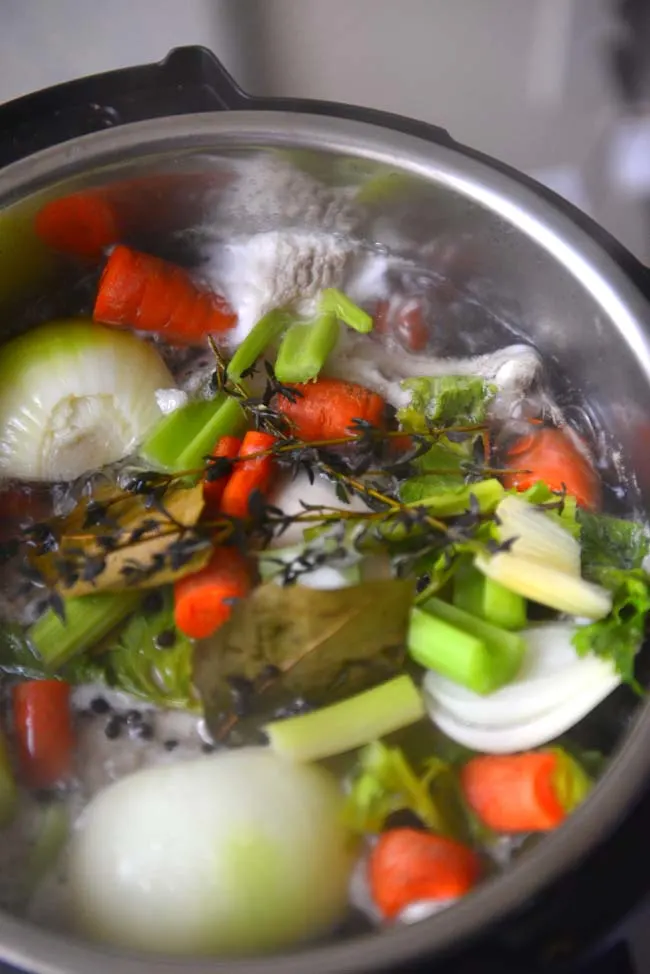
The greyish foam rising up to the top is what you have to skim off.
Stove Top Way – When you really miss those old days
Traditionally stock is made on the stove top after long hours of slow of simmering. But other than the time and occasionally peeking into the stockpot the process is the same. Add all the ingredients to a large pot and bring it aboil. Skim off the coagulated bits on the top, in other words, the scum. Cover and let it simmer for at least 2 hours. The slow simmering is essential to extract the flavor from the meat and bones, and the longer you simmer the more minerals and nutrients are transferred to the broth.
So here is how to make nutritious and flavorful chicken stock easily at home …
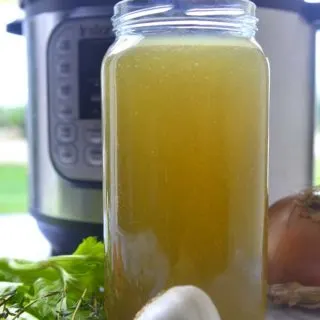
Homemade Chicken Stock
Ingredients
- 3- 4 lb Chicken Notes
- 1 Onion large
- 2 Carrots
- 2 Ribs Celery
- 8 Cloves Garlic
- 2 Tsp Black Peppercorns
- 2 Bay leaves Dry/Fresh
- 4 Sprigs Thyme Fresh 2 Tsp Dried
- 8 C water
Instructions
- Wash and pat dry the chicken. (Notes)
- Skin the halve the onion. Chop the celery and carrot into large chunks. Leave the garlic whole.
- Place the chicken in the pressure cooker (Notes). Add the spices and water. Make sure that the water lever is below the allowed maximum level.
- Bring the contents to boil (use the saute function in the electric cookers). Let it continue boiling for 5 minutes. Skim off the foam that has accumulated on top.
- Close the lid and seal the vent. Change to manual high pressure setting and set the timer for 40 minutes.
- Once the cooking is finished , let the pressure reduce naturally.
- Let it cool and strain (notes)
- Store in the fridge for up to 4 days or freeze for use later.
Notes
- Use whole chicken or equivalent mix of bones in pieces.
- Make sure that there is nothing tucked in the cavity.
- I use a 6 qt IP for 3.5 lb chicken.
- Let the stock cool a little before you strain it .
- Strain the stock while it is warm. When refrigerated the broth might gelatinize.
Important: Nutrition Values are estimates. Actuals vary based on ingredients and serving size.



